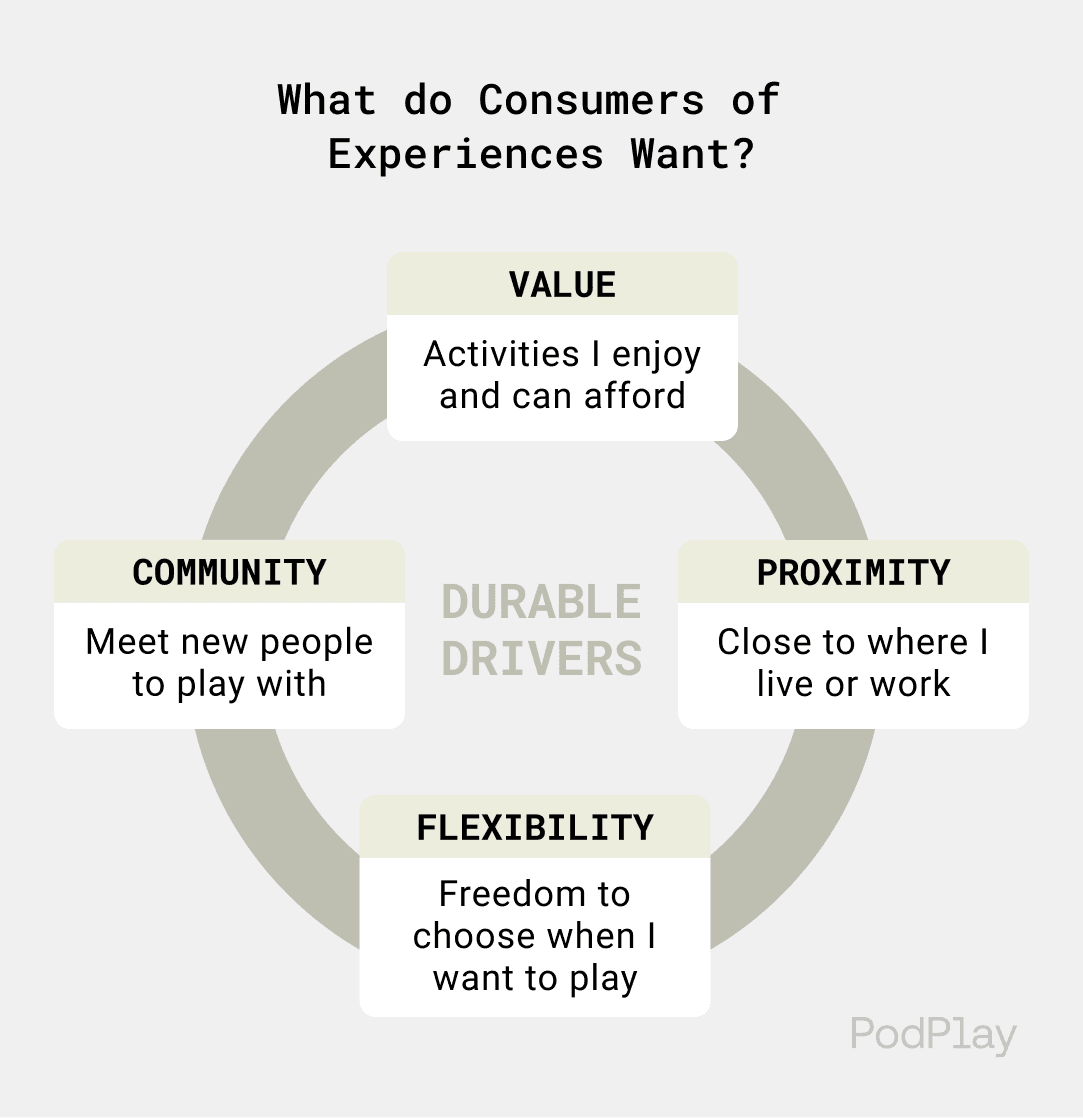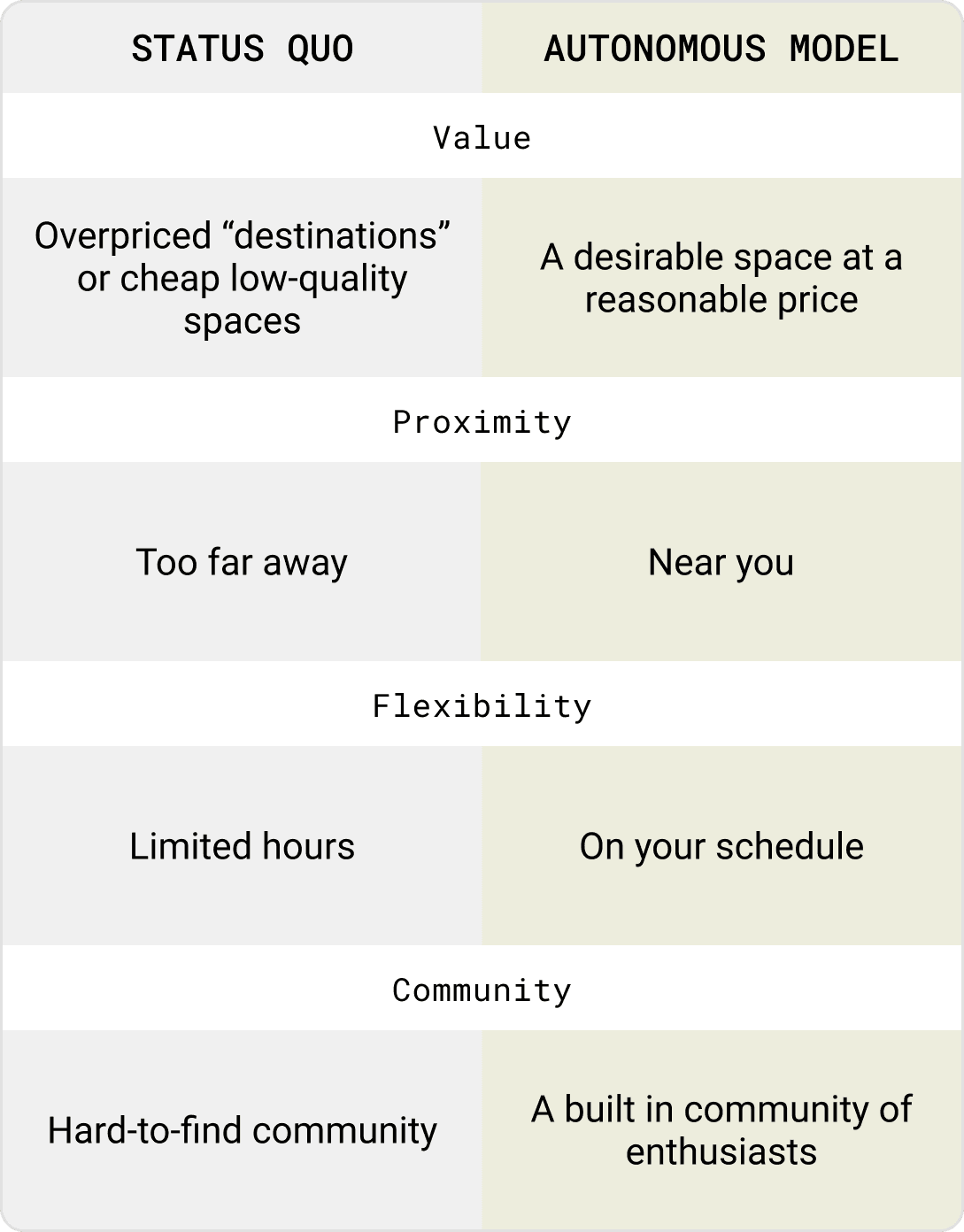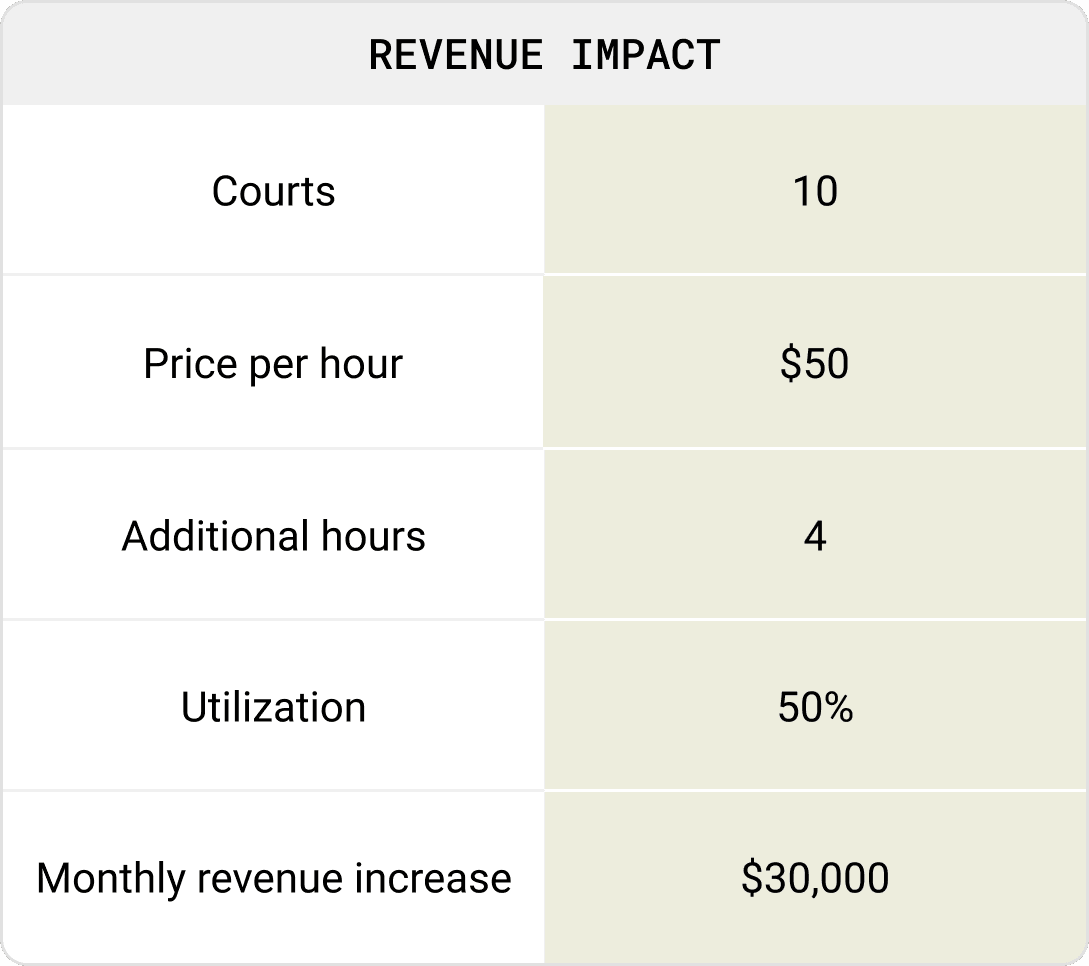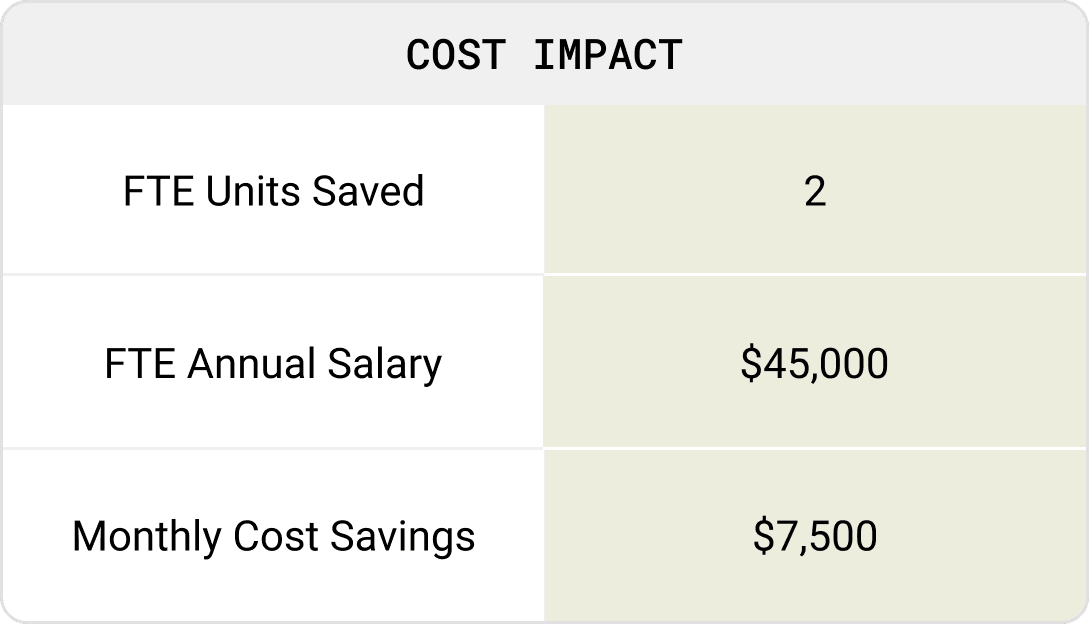

Amazon’s retail business is built on the insight that customers value low prices, vast selection, and fast, convenient delivery - and that these drivers remain stable over time. Jeff Bezos captured this in an Amazon shareholder letter:
“It is difficult for us to imagine that ten years from now, customers will want higher prices, less selection, or slower delivery.”
The enduring nature of those preferences allows Amazon to make long-term investments in technology that improve those characteristics.
If we apply the same thinking to consumer experiences, what are the equivalent enduring characteristics?
We think consumers of experiences seek value, proximity, flexibility, and community.

It is hard for us to imagine a future where the inverse might be true - where customers seek out overpriced spaces that are far away, only open limited hours, and leave us feeling alienated and alone. It is our belief that value, proximity, flexibility and community are drivers of consumer preferences that will stand the test of time.
With PodPlay, we have made, and will continue to make, long-term investments in technology that dramatically improves the ability of venue operators to deliver the experiences customers want.
Before PingPod, if you wanted to play ping pong in New York City you could either go to one centrally-located, high-end venue that focused on food, alcohol and events - or you could head to a no frills basement club with bad lighting and sub-par equipment. The founding insight of PingPod was that we could use technology to create a third way. If we could substitute technology (a fixed cost) for labor (a variable cost), we could simultaneously increase capacity (open 24/7) and reduce operating costs.
Fast forward to today and there are 15 PingPods using the PodPlay tech stack to operate autonomously - with no front desk and no full time staff onsite. Here is a peak at how it works:
We see this same “barbell” setup in many experience verticals, in which there are high-end options that pursue an eatertainment model, and low-end options that compete on price, with nothing in between. The competitive landscape is dictated by the economics of these businesses. If business owners pay high rent and provide a premium experience, then they’ll need the additional margin and revenue provided by food and beverage (particularly alcohol) to make the numbers work. If they compete on price, then they will compromise on quality of experience, and generally need to locate the venue in less desirable neighborhoods, in order to keep costs at a minimum.
Operating autonomously fundamentally shifts the underlying economics, allowing for a new kind of venue that can profitably deliver a compelling combination of value, proximity, flexibility, and community.
By minimizing variable labor costs, the autonomous model allows a venue to stay open more hours, while adding very little marginal cost. Those additional hours offer customers with busy schedules more flexibility to play when they want, generating revenues that go straight to the venue’s bottom line.
With lower operating costs and more capacity, venues can afford to utilize smaller formats, find homes in more desirable locations, and invest in creating a great space with high-quality equipment - delivering value and proximity to customers.
When combined with software tools to create and promote events, a quality space near where its customers live and work, will lead to a greater sense of community.
By shifting the economics of the business, the autonomous operating model frees venues to deliver huge improvements across each of the core enduring consumer needs.

Operating autonomously impacts both revenue and costs.
Consider a pickleball club with ten courts that charges $50 per court per hour. If the club can stay open four additional hours per day by operating autonomously, and gets 50% utilization during those additional hours, it will get two additional hours of revenue per court each day. 10 courts x 2 hours x $50 / hour = $1,000 of additional revenue per day, or more than $350,000 per year.

On the cost side of the equation, operating autonomously can eliminate the need to hire one or more full time employees to manage a front desk or reception area. If we assume two less full-time employees with an individual annual salary of $45,000, then the cost savings are $7,500 per month, or $90,000 per year.

Many venues may choose to re-allocate these labor cost savings to hiring additional employees focused on improving programming or building community.
The exact math will vary by geography, venue, and experience vertical, but the end result is universal: increased profitability that can be reinvested in improving the consumer experience.
Successful new technologies must do at least one of the following:
1) Increase efficiency: the technology reduces time, effort, or cost of existing processes. For example: the move from the typewriter to word processor, or calculator to spreadsheet.
2) Create new experiences: the technology creates a new category of product or experience. Mobile phones - the ability to have a supercomputer with you at all times - is an archetypical example that has changed consumers' experience of the world.
3) Change underlying economics: the technology fundamentally shifts cost structures in a way that enables a new business model. By changing computing power from a large upfront fixed cost to a variable cost, cloud computing spawned a generation of companies that wouldn't have otherwise been possible.
We believe that the autonomous operating model and the technology that enables it belong in the third category. By changing the math, autonomous experience technology has the potential to change what’s possible for venue operators - allowing them to deliver a combination of value, proximity, flexibility, and community that delights customers.
Autonomous mode is one of several sought-after features of the PodPlay SaaS offering. PodPlay gives venue operators all the tools they need to digitally manage a physical space - integrating video replays, automated scoreboards, and autonomous functionality with a reservation engine, event management, coach connect, membership module, and payments.
Originally built to power PingPod, the network of futuristic autonomous ping pong clubs, PodPlay is now being used to manage venues across pickleball, padel, ping pong, and pool, with more experience verticals to come in the future.
If you’re interested in learning more about PodPlay's replay technology, head over to our website and request a demo.
Every great company has a Marty Supreme phase. It’s intense. It’s personal. It’s unbeatable—and unscalable.The companies that endure don’t abandon that phase. They encode it.
Jan 14, 2026
Autonomous experiences have flourished indoors, where we can control for weather, heat, and access. Outdoors–the largest segment of pickleball play–remained unsolved. The result: operators were forced to choose between the flexibility of outdoor courts and the efficiency of automation. Until now. PICKLETILE™ x PodPlay unlocks outdoor autonomous pickleball.
Dec 8, 2025